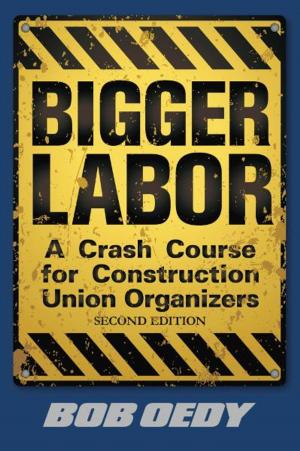What You Should Know About Prostate Cancer
Nonfiction, Health & Well Being, Medical, Specialties, Clinical Medicine, Reference & Language, Study Aids, Education & Teaching| Author: | Daniel C. Merrill MD | ISBN: | 9781456601577 |
| Publisher: | eBookIt.com | Publication: | March 24, 2011 |
| Imprint: | eBookIt.com | Language: | English |
| Author: | Daniel C. Merrill MD |
| ISBN: | 9781456601577 |
| Publisher: | eBookIt.com |
| Publication: | March 24, 2011 |
| Imprint: | eBookIt.com |
| Language: | English |
During his career at the Martinez Administration Medical Center in California Dr Merrill was responsible for the care of thousands of men with prostate cancer and has performed hundreds of curative radical retropubic prostatectomies. In this eBook Dr. Merrill shares the knowledge gained from this experience with the reader. It is the author's strong belief that no one should die of prostate cancer in the 21st century. Dr Merrill also believes that the key to beating this potentially lethal cancer is early diagnosis and aggressive surgical removal of the cancer before it has spread beyond the confines of the prostate. Younger cancer free males should use the information in this book to be sure that they are being properly screened for prostate cancer at appropriate intervals. Men who have developed prostate cancer may use its contents to familiarize themselves with the pros and cons of the available methods for treating prostate cancer including open surgery radiation therapy brachytherapy cryosurgery laparoscopic surgery and robotic assisted laparoscopic surgery. It is essential that the male with prostate cancer have this information at his finger tips when discussing his treatment options with the urologist or radiotherapist. The treatment choices for males with metastatic disease are also addressed while stressing the advantages of the subcapsular approach to orchidectomy. Finally Dr Merrill addresses the all important issue of how to pick a surgeon.
During his career at the Martinez Administration Medical Center in California Dr Merrill was responsible for the care of thousands of men with prostate cancer and has performed hundreds of curative radical retropubic prostatectomies. In this eBook Dr. Merrill shares the knowledge gained from this experience with the reader. It is the author's strong belief that no one should die of prostate cancer in the 21st century. Dr Merrill also believes that the key to beating this potentially lethal cancer is early diagnosis and aggressive surgical removal of the cancer before it has spread beyond the confines of the prostate. Younger cancer free males should use the information in this book to be sure that they are being properly screened for prostate cancer at appropriate intervals. Men who have developed prostate cancer may use its contents to familiarize themselves with the pros and cons of the available methods for treating prostate cancer including open surgery radiation therapy brachytherapy cryosurgery laparoscopic surgery and robotic assisted laparoscopic surgery. It is essential that the male with prostate cancer have this information at his finger tips when discussing his treatment options with the urologist or radiotherapist. The treatment choices for males with metastatic disease are also addressed while stressing the advantages of the subcapsular approach to orchidectomy. Finally Dr Merrill addresses the all important issue of how to pick a surgeon.















